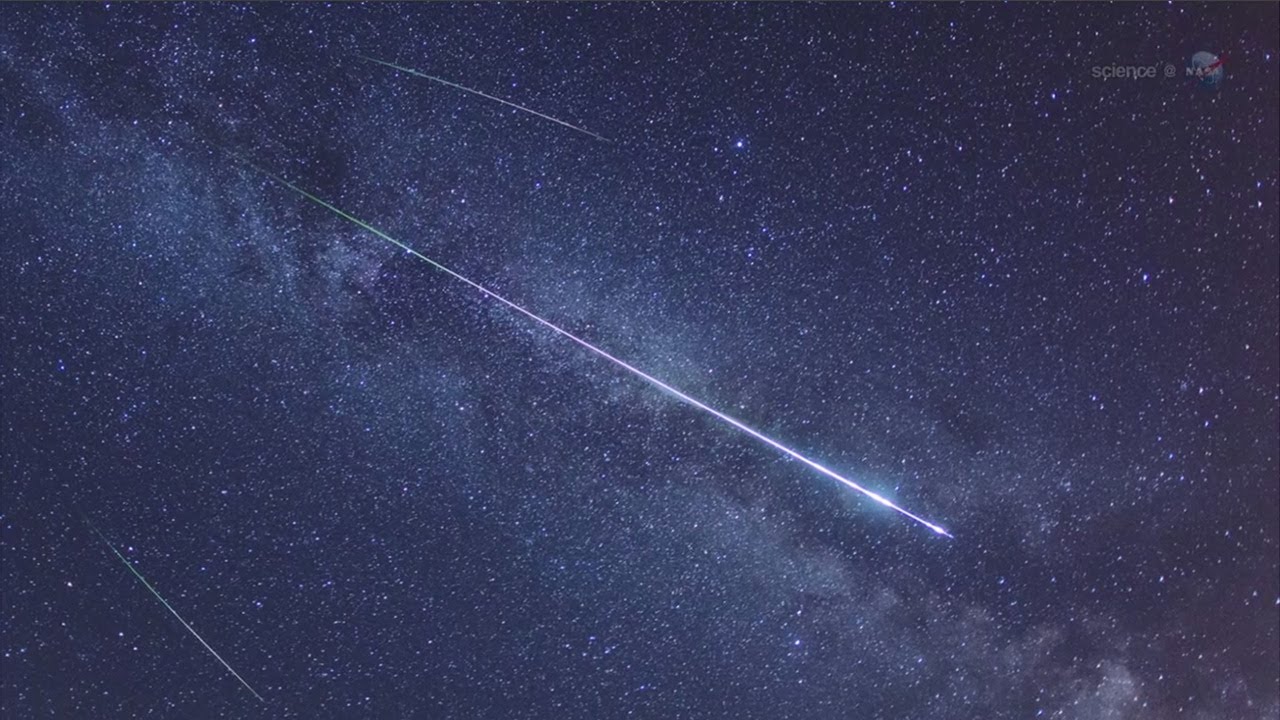Lyrid meteors face off against a bright moon this week

Come Thursday morning (April 22), the first good meteor shower in nearly four months reaches its peak with the annual Lyrid meteor shower, although a bright moon could interfere.
The Lyrid shower is not a rich display, certainly not to be compared to December's Geminids or the Perseids of August. A single observer looking skyward under dark, clear skies may see 10 to 20 meteors per hour.
But many of these meteors tend to be brilliant and appear to move fairly fast, streaking through our atmosphere at an average velocity of 30 miles (48 kilometers) per second. About a quarter of them leave persistent trains. Within a day on either side of the maximum, a skywatcher can usually catch five to 10 Lyrids under good skies.
Related: How to see the best meteor showers of 2021
The Lyrids are actually the legacy of a long-departed comet bearing the name of Thatcher. This modestly bright comet was discovered in April 1861 by New York amateur astronomer, A.E. Thatcher.
The orbit of the Lyrids strongly resembles that of comet Thatcher, which has an orbital period of about 415 years. The meteors are cosmic dross; tiny bits and pieces shed by this comet on previous visits to the sun. The Earth's orbit nearly coincides with the comet around April 22 each year. When we pass that part of our orbit, we ram through the dusty debris left behind by the comet.
We call these meteors "Lyrids" because their paths, if extended backward, appear to diverge from a spot in the sky a bit southwest of the brilliant bluish-white star Vega, in the constellation of Lyra, the lyre.
Breaking space news, the latest updates on rocket launches, skywatching events and more!
Vega does not begin to make its appearance until around 9 p.m. local daylight time, when it rises above the northeast horizon. By 4 a.m., it has climbed to a point high in the sky, more than two-thirds of the way from the horizon to the point directly overhead.
We recommend lying down on a lounge chair that offers a wide-open view of the sky rather than risk a strained neck. Bundle up, too, for while it won't be as cold as on a winter's night, nights in April can still be quite chilly.
Some bad news, some good news
A bright waxing gibbous moon, two days past first quarter, will pose a significant handicap in viewing the Lyrids this year. Located to the west (right) of the Sickle of Leo, the moon will be in the sky for much of the overnight hours of April 21-22, likely squelching a view of all but the brightest Lyrids.
However, here's a bit of good news: the moon will set at around 4 a.m., just when Vega is soaring high in the sky. So, for about a half hour, until about 4:30 a.m., the skies will be dark and you'll be able to watch the Lyrids under the best possible conditions. Then, the skies will begin to brighten with the approach of sunrise soon after 6 a.m.
An oldie, but (sometimes) a goodie
Among all the meteor showers, the Lyrids are the oldest documented, having been first recorded by the Chinese in 687 B.C. when "many stars flew from the northeast." There have been other noteworthy Lyrid showers recorded such as in 15 B.C. (China) and 1136 (Korea).
In 1803, a fire alarm roused many townspeople in Richmond, Virginia, from their beds to witness meteors that seemed to fall from every point in the heavens, like a shower of skyrockets.
In 1922, skywatchers recorded an astonishing Lyrid rate of 96 per hour, and in 1982 the meteors surprised observers with rates as high as 80 per hour.
So, the bottom line is that although the Lyrids are admittedly a weak display, they have also have had a history to surprise observers, so it's always one to watch.
Joe Rao serves as an instructor and guest lecturer at New York's Hayden Planetarium. He writes about astronomy for Natural History magazine, the Farmers' Almanac and other publications. Follow us on Twitter @Spacedotcom and on Facebook.

Joe Rao is Space.com's skywatching columnist, as well as a veteran meteorologist and eclipse chaser who also serves as an instructor and guest lecturer at New York's Hayden Planetarium. He writes about astronomy for Natural History magazine, Sky & Telescope and other publications. Joe is an 8-time Emmy-nominated meteorologist who served the Putnam Valley region of New York for over 21 years. You can find him on Twitter and YouTube tracking lunar and solar eclipses, meteor showers and more. To find out Joe's latest project, visit him on Twitter.
